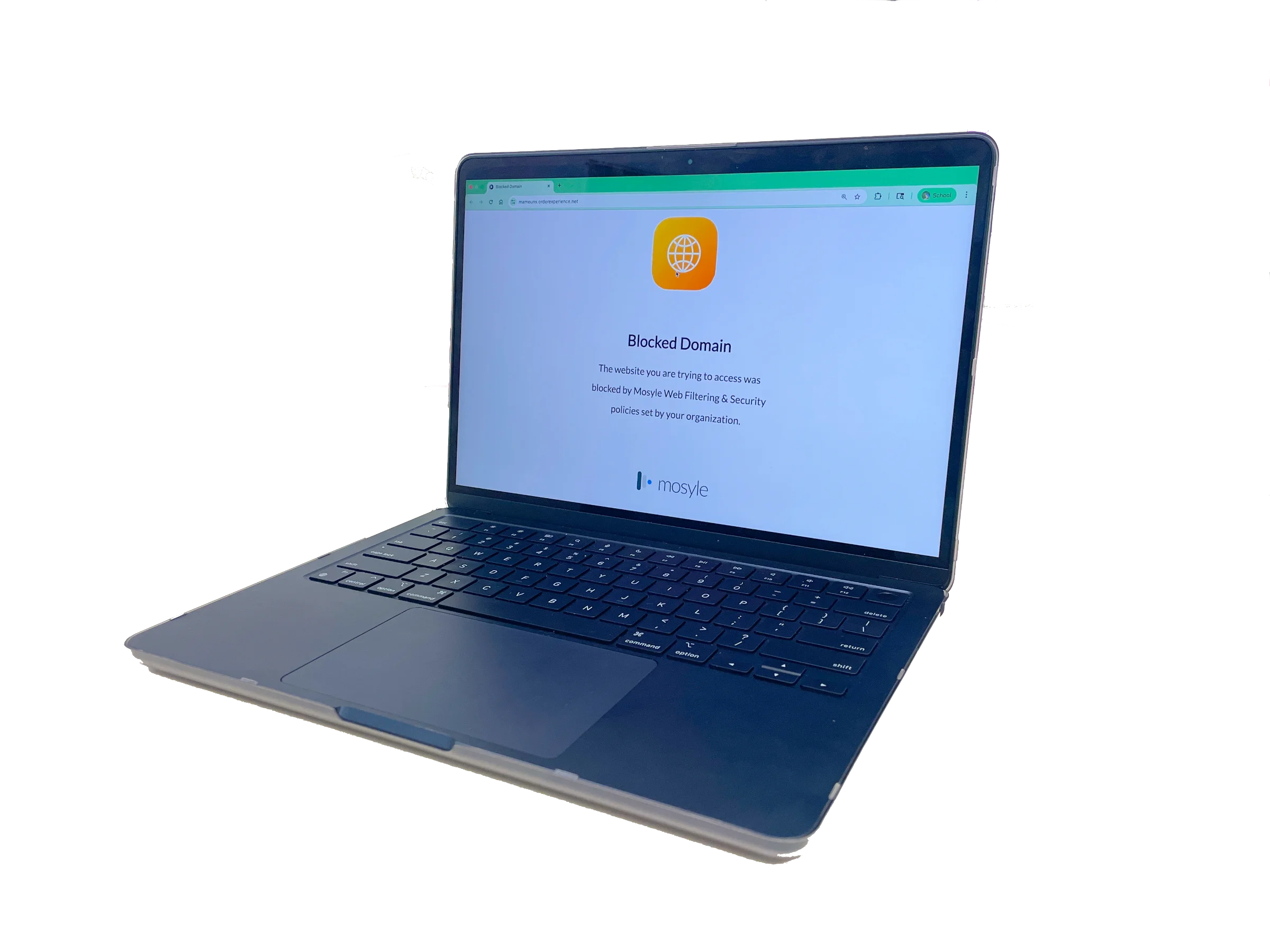Technology restrictions hinder learning
September, 2025
Photo: Charley Hu
A restricted message from Mosyle appears when students attempt to access certain websites.
The start of the new school year has brought many changes to Princeton High School: new teachers, new schedules, new facilities, and — most noticeably — new school-issued MacBooks. On paper, the laptops are a clear upgrade: faster, sleeker, and more powerful. But beneath that polish, many students have run into something less exciting: a wall of restrictions.
Last year’s devices allowed students a degree of flexibility across multiple apps. Students once had access to Adobe Creative Cloud — tools like Photoshop, Illustrator, Premiere Pro, and InDesign — which were heavily used by visual arts elective classes, as well as various clubs like Yearbook.
When access to key academic or creative tools is blocked, not every student has a clear or immediate path forward — especially those who may not know how to navigate the tech support process. That gap points to a deeper equity issue of technological fluency — an issue that our tech department should work to solve, potentially by hosting assemblies to instruct students. Still, Dean Diana Lygas believes that the district is moving in the right direction.
“There is certainly a balance that comes into play. [Unfortunately], that sometimes means blocking access to certain content that might be non-educational, disruptive, or inappropriate,” said Lygas. “But I love that our students have the benefit of receiving a school-issued computer as nice as a MacBook. It offers so much power and creativity in what students can use it for.”
However, students such as Adam Kaplan ’27 argue that the benefits of the investment by the school are significantly cut short through device restrictions.
“If you’re giving us computers this good, we should be doing something with them, considering [the district] just spent hundreds of dollars per student getting us these crazy computers,” said Kaplan.
The abruptness of the technology changes have wreaked havoc on the workflow of not just students but also teachers as they have lost access to classroom technology. Printers, document cameras, and DVD players — each pieces of technology that had previously been integral parts of the way some teachers have conducted classes — have disappeared without explanation or forewarning.
“Our old dock cameras [and] DVD players are gone ... they’ve just ceased to exist ... they [are] no longer here in any of the rooms. [The] new technology sounds great. However, it doesn’t allow us to teach the same materials that we used to,” said English teacher Anna Soriano.
Restrictions on technology, while well-intentioned, are detrimental largely for the same reasons that helicopter parenting creates ineffective adults — people need to learn from failure. We implore administration to keep our school’s motto at the top of their mind: learn to live. It means — in today’s day and age — learning to live not just with technology but also using it appropriately as a tool. This requires being exposed to the technology of tomorrow in an environment where students can learn to use it effectively and to their benefit, while continuing to maintain an environment of genuine learning. And this is difficult to accomplish through the sudden removal of integral websites, apps, and classroom tools. PPS administration should strive to be transparent with teachers and students — the people who are most affected by such changes — and take their feedback when making changes.